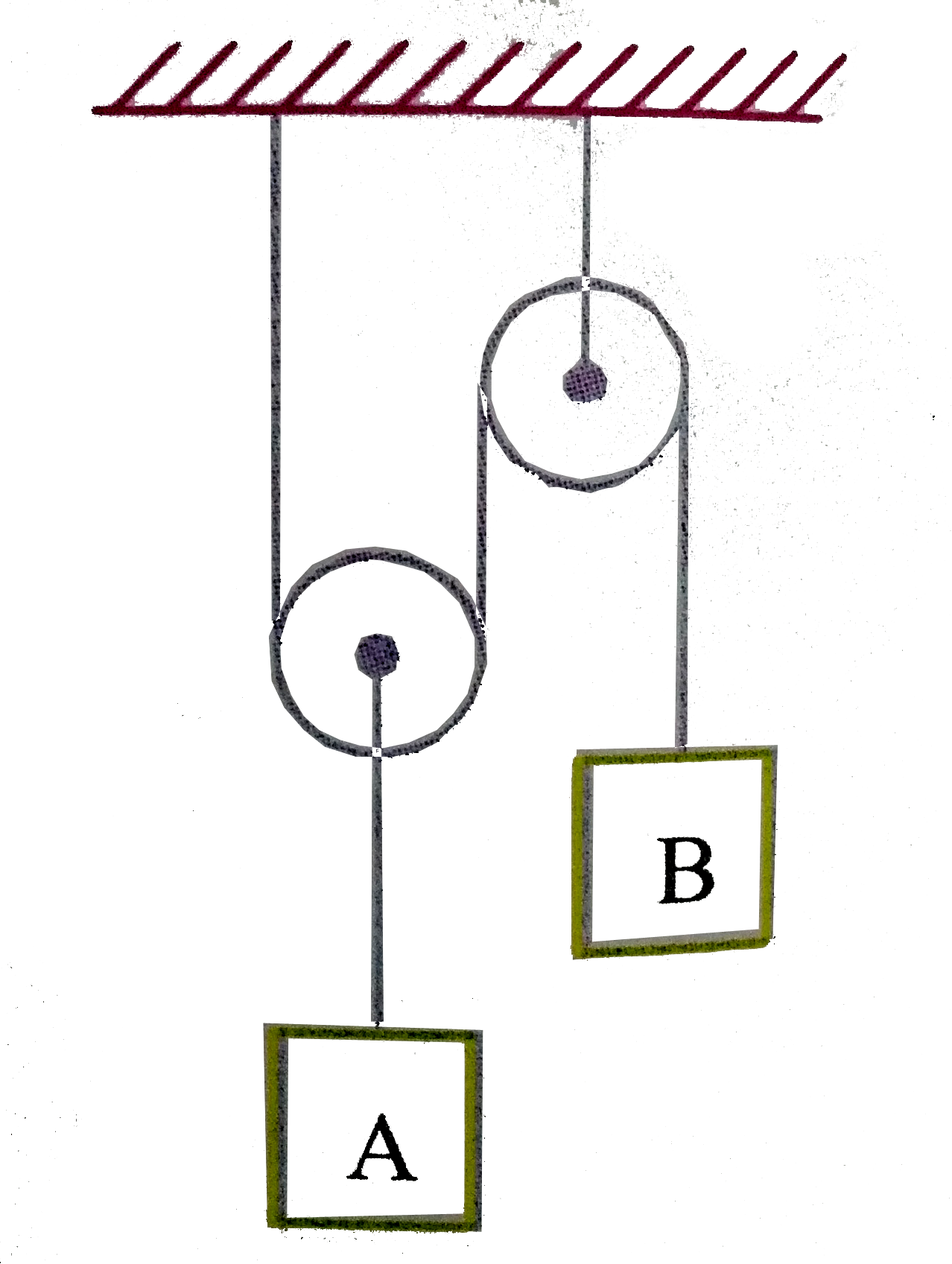Block A has a weight of 300N and block B has weight 50N. Calculate the distance A must descent form rest before it obtains a speed of 4m/s (Neglect the mass of cord and pulleys). (Takeg=10m/s2).
 .
.
The correct Answer is:2
SA=h and SB=2h,VA=4m/s,VB=8m/s From energy conservation decreases in P.E of A = Increase in P.E.B+ Increase in K.E of both A and B
300h=50×2h+12×30×42+12×5×82
300h=100h+240+160,
200h=400,h=2m.
Topper's Solved these Questions
- WORK POWER AND ENERGYBook:NARAYNAChapter:WORK POWER AND ENERGYExercise:Level-VI (Single Answer)
Explore 31 Videos
- WORK POWER AND ENERGYBook:NARAYNAChapter:WORK POWER AND ENERGYExercise:Level-VI (Multiple Answer)
Explore 11 Videos
- WORK POWER AND ENERGYBook:NARAYNAChapter:WORK POWER AND ENERGYExercise:Level-V (Comprehension)
Explore 22 Videos
- WORK , ENERGY & POWER Book:NARAYNAChapter:WORK , ENERGY & POWER Exercise:EXERCISE IV
Explore 43 Videos
Similar Questions
Block A has a weight of 3000N and block B has a weight of 500N. Determine the distance that A must descend from rest before it obtains a speed of 2.5m/s. Neglect the mass of the cord and pulleys.
 .
.
View SolutionBlock A has a weight of 3000N and block B has a weight of 50N. Coefficient of friction for A is μk=0.2. Determine the pseed of block A after moves 1m down the plane, starting from rest. Negelect the mass of the cord and pulleys.

View Solution
Knowledge Check
Block A weights 4 N and block B weights 8 N. The coefficient of kinetic friction is 0.25 for all surfaces. The force F to slide B at a constant speed, when A rests on B and moves with it, is
 A2 NB3 NC4 ND5 N
A2 NB3 NC4 ND5 NA body of mass 1 kg falls from rest through a distance of 200 m and acquires a speed of 50 m/s. Work done against friction of air is (Take g=10m/s2)
A700 JB1250 JC750 JD1960 JA block of mass 50 kg slides over a horizontal distance of 1m. If the coefficient of friction between their surface is 0.2, then work done against friction is (take g=9.8m/s2) :
A98 JB72 JC56 JD34 J
In figure calculate the linear acceleration of the blocks.
Mass of block B=8kg
mass of disc shaped pulley =2kg (take g=10m/s2)

View SolutionIn the arrangement shown in figure mA = 4.0 kg and mB = 1.0 kg. The system is released from rest and block B is found to have a speed 0.3 m/s after it has descended through a distance of 1m. Find the coefficient of friction between the block and the table. Neglect friction elsewhere.
(Take g = 10 m/s2)

View SolutionIf the system is released from rest, determine the speeds of both masses after B has moved 1 m. Neglect friction, the masses of pulleys and inextensible string.

View SolutionWhen the three blocks of masses M, 2M and 2M in the system are released from rest, they accelerate with a magnitude of 1 m/s2. What is the coefficient of kinetic friction between block on the table and the table top? (neglect the force of friction in the pulleys and take g =10 m/s2)
View SolutionIn the arrangement shown in figure mA = 4.0 kg and mB = 1.0 kg. The system is released from rest and block B is found to have a speed 0.3 m/s after it has descended through a distance of 1m. Find the coefficient of friction between the block and the table. Neglect friction elsewhere.
(Take g = 10 m/s2)

View Solution

